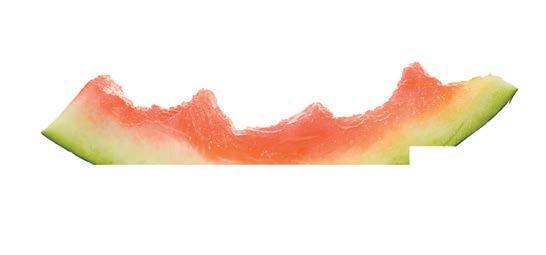
5 minute read
FOOD FOR THOUGHT
from Segment magazine 3
Waste not
Stop throwing away these surprisingly nutritious foods.
Advertisement
Food waste is a major issue in Aotearoa New Zealand. According to Love Food Hate Waste NZ, Kiwi homes throw away 157,398 tonnes of food per year, all of which we could eat.
We often discard things like produce skins and stems, which are not only edible but also a great source of additional fibre and nutrients. Curb food waste in your household by adding peels and stems you would normally throw away into nutritious, delicious recipes.
Cucumber skin
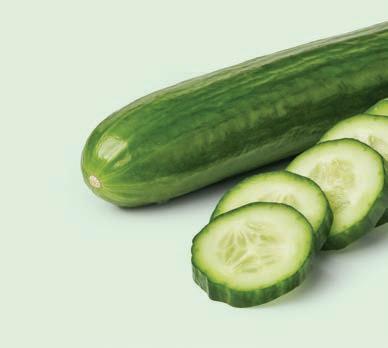
As cucumbers contain 95% water and are low in calories, they are a refreshing, nutritious and incredibly versatile addition to any diet. The skins of cucumber are rich in vitamin K and phytochemicals and also contain magnesium, potassium, vitamin C, manganese, pantothenic acid, molybdenum and insoluble dietary fibre. To gain the maximum nutritional benefits, eat cucumbers with the skin on, as peeling reduces the amount of dietary fibre, along with some vitamins and minerals. The skin of a cucumber contains more vitamin K than the flesh, which supports bone health and blood clotting.
Often eaten raw, cucumbers make great low-calorie snacks, perfect with hummus, olive oil, salt or your favourite salad dressing. Slice or grate, skin on and add to salads and smoothies.
Watermelon rinds

Not only do watermelon rinds have all the same nutrients found in the refreshing fruit, but the rinds also contain even higher concentrations of certain minerals, vitamins and bioactive ingredients. While low in calories, watermelon rind contains high concentrations of provitamin A carotenoids, vitamin C, vitamin B6, zinc and potassium. The nutrientdense rind also contains chlorophyll, lycopene, citrulline, amino acids, and phenolic compounds such as flavonoids.
Wash the watermelon well before use. Make a refreshing summer drink by blending watermelon flesh and rinds with lime juice and mint, or add a few watermelon slices (including the rind) to your favourite smoothies. You can also add the watermelon rind to fruit salad, salsa, chutney, stir-fries, coleslaw, or pickle it.
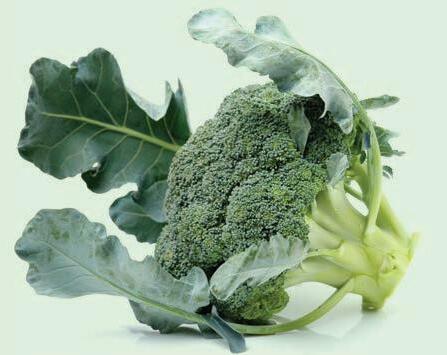
Broccoli and cauliflower stems and leaves
The stems and leaves of brassicas like broccoli and cauliflower are high in dietary fibre and other nutrients.
Broccoli stems contain many of the same nutrients as the broccoli head, including provitamin A carotenoids, vitamin C, potassium and folate. Additionally, the stem contains vitamins B1 (thiamine) and B2 (riboflavin), iron, magnesium, zinc and sulforaphane, a phytochemical with a range of potential health benefits including anti-inflammatory properties. Cauliflower leaves are rich in iron, dietary fibre, potassium, beta-carotene, plus folate and are one of the richest sources of calcium in vegetables. Foods rich in calcium and iron have several health benefits including healthy bones and better immunity, and the high dietary fibre content aids digestion, keeping the gut healthy.
Broccoli and cauliflower stems are great in stir-fries, curries, pasta or soup. Grate or finely slice stems of broccoli or cauliflower and add to coleslaw or salads. The leaves can be sautéed, roasted or added to stir-fries, soups, or frittatas.
Beet greens
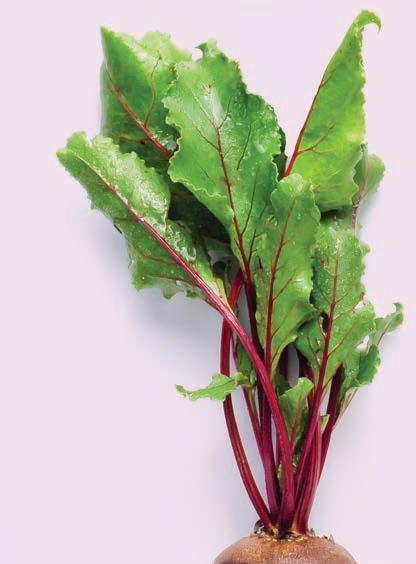
Beet greens are the young leaves of the beetroot plant and are high in vitamin B6, magnesium, potassium, copper, and manganese. Low in calories, fat, cholesterol and sugar, beet greens contain more iron than spinach or kale and generally possess higher concentrations of vitamins, minerals, and dietary fibre than the root (with the exception of folate). The provitamin A content in beet greens helps strengthen the immune system, can help fight inflammation and support brain health.
Adding a handful of beet greens to your favourite smoothies will boost the vitamin and mineral count without altering the flavour. Delicious in a salad or toss them in a homemade pesto by replacing half your herbs with beet greens. Chop and sauté beet greens with garlic and olive oil for a fast, tasty side. If you are making a soup that requires spinach, kale, or any other green vegetable, use beet greens instead.
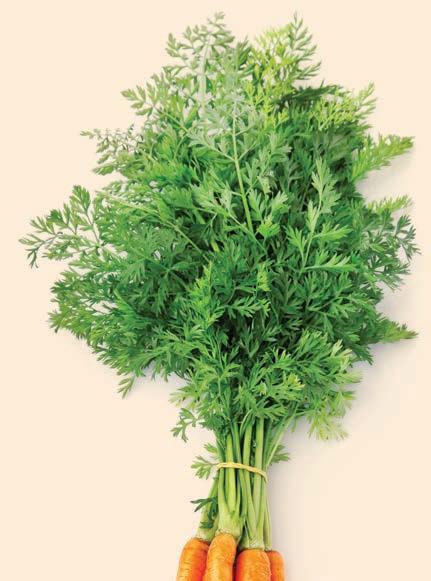
Carrot tops
Did you know carrot tops have more provitamin A carotenoids, important for a range of body functions including vision and immunity, than the orange root? Fat and cholesterol–free, carrot tops also contain significant amounts of dietary fibre, vitamin C, calcium and iron. These nutritious greens also contain vitamin K and various phytochemicals, such as phenolic compounds and polyacetylenes.
Carrot tops are a great herb substitute in any dish you are already using carrots in, or skip the basil and use them with equal parts baby spinach in pesto. If you are not a fan of their bitter taste, you can add them to soup stock or blanch the carrots greens in boiling water to help reduce the bitter flavour.
For more information on the nutrient content of these foods and over 2700 commonly prepared and eaten foods in New Zealand, visit New Zealand Food Composition Data at foodcomposition.co.nz To find out more about food waste in Aotearoa, visit lovefoodhatewaste.co.nz/food-waste










